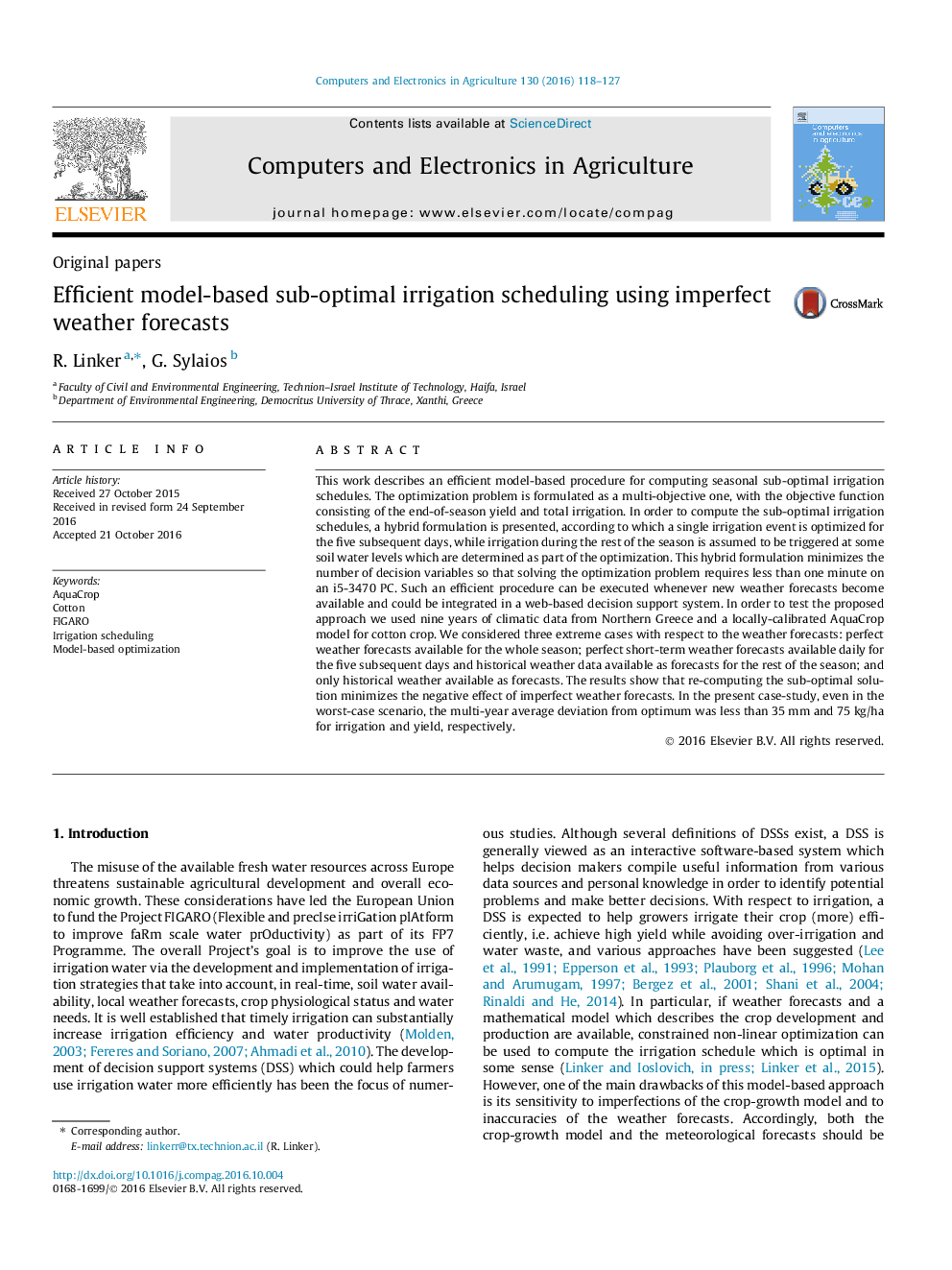| Article ID | Journal | Published Year | Pages | File Type |
|---|---|---|---|---|
| 4759193 | Computers and Electronics in Agriculture | 2016 | 10 Pages |
Abstract
This work describes an efficient model-based procedure for computing seasonal sub-optimal irrigation schedules. The optimization problem is formulated as a multi-objective one, with the objective function consisting of the end-of-season yield and total irrigation. In order to compute the sub-optimal irrigation schedules, a hybrid formulation is presented, according to which a single irrigation event is optimized for the five subsequent days, while irrigation during the rest of the season is assumed to be triggered at some soil water levels which are determined as part of the optimization. This hybrid formulation minimizes the number of decision variables so that solving the optimization problem requires less than one minute on an i5-3470 PC. Such an efficient procedure can be executed whenever new weather forecasts become available and could be integrated in a web-based decision support system. In order to test the proposed approach we used nine years of climatic data from Northern Greece and a locally-calibrated AquaCrop model for cotton crop. We considered three extreme cases with respect to the weather forecasts: perfect weather forecasts available for the whole season; perfect short-term weather forecasts available daily for the five subsequent days and historical weather data available as forecasts for the rest of the season; and only historical weather available as forecasts. The results show that re-computing the sub-optimal solution minimizes the negative effect of imperfect weather forecasts. In the present case-study, even in the worst-case scenario, the multi-year average deviation from optimum was less than 35Â mm and 75Â kg/ha for irrigation and yield, respectively.
Related Topics
Physical Sciences and Engineering
Computer Science
Computer Science Applications
Authors
R. Linker, G. Sylaios,
